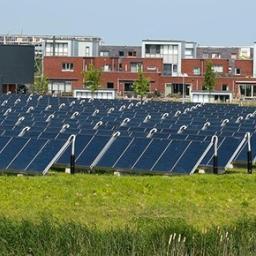Five global environmental assessments, one call for enhanced action
Increasing climate change, biodiversity loss and land degradation are threatening the well-being of present and future generations. Current global policy efforts are insufficient to achieve the agreed goals. Accelerated action and transitions are needed. Although this is not a new message, the time left to translate ambition into action has diminished, considerably, and, as a result, the flexibility in the possible solutions has also reduced. This has consequences for the Netherlands. Cabinet needs to forge closer links between the policy agendas for the transitions towards a sustainable energy system, circular agriculture and a circular economy. In addition, more attention needs to be paid to the external footprint and changes in consumption.
These are the key messages of a synthesis report by PBL Netherlands Environmental Assessment Agency of five global environmental outlook studies. These studies are the UNCCD Global Land Outlook (2017), the IPCC Report on Global Warming of 1.5 °C (2018), UNEP's 6th Global Environment Outlook (2019), the IPBES Global Assessment of biodiversity and ecosystem services (2019) and UNEP-IRP's Global Resources Outlook (2019). PBL conducted the synthesis at the request of the Ministries of Foreign Affairs and Infrastructure and Water Management.
Addressing root causes
The five studies deal with climate, land use, resource use and biodiversity. They all point in the same direction; any approach aimed at long-term transitions must also address the root causes of environmental degradation. These include, for example, production methods, lifestyles and consumption patterns, inequality, international trade and financial systems, and the social values on which they are based.
Technological solutions and changes in consumption are equally important
Compared to previous reports, the five environmental assessments pay much more attention to the contribution of changing consumption patterns to the achievement of globally agreed environmental goals. Awareness is growing about technological solutions also having their downsides. Consumption change may significantly reduce the pressure on technology, but does require that current generations with high environmental impact significantly change their consumption patterns. For example, less energy and material use, less food wastage, and less consumption of meat and dairy products.
More alignment and concretisation of Dutch transition agendas
Dutch Cabinet policy is aiming for three transitions, namely those towards sustainable energy supply, circular agriculture and circular economy. All three transition agendas contribute to solving the aforementioned environmental issues. However, in order to identify tensions in the implementation at an early stage and make the agendas more effective, more coherence and specificity is needed. Examples include a shared vision on biomass use or consumption policy. In addition, the objectives for circular agriculture and circular economy need to be worked out in greater detail if they are to provide direction for policy efforts.
Include external footprint in policy
For the three transitions, the Netherlands must take a close look at its international environmental footprint to avoid shifting the burden onto other countries. The Dutch Government's ambition to halve the ecological footprint of national consumption by 2050 needs to be made concrete. Policy choices are needed to systematically monitor and reduce the footprint, both with regard to consumption categories (energy, food, materials), and location (national or international) and type of footprint (carbon, water, land, biodiversity). Furthermore, reducing the footprint requires more sustainable production as well as a more sustainable consumption pattern.




